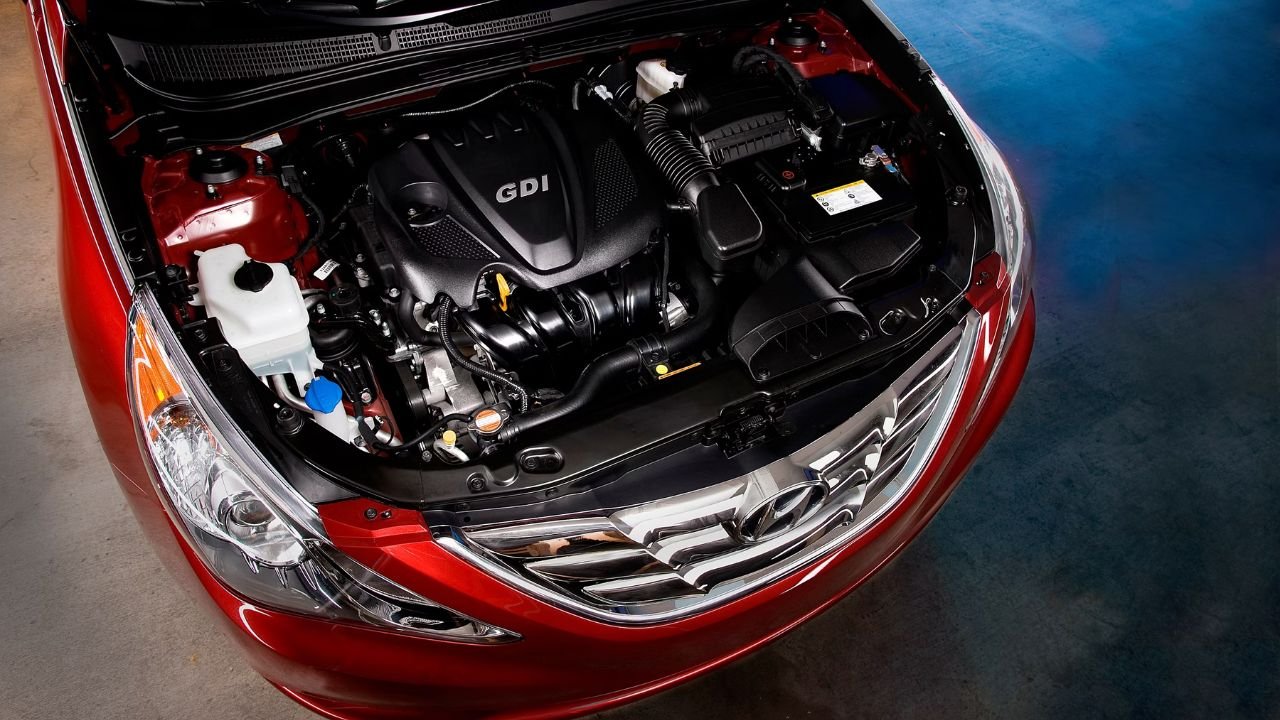Error codes can be the bane of a car owner’s existence, especially when they light up your dashboard unexpectedly. One of the more perplexing and worrisome codes is P1326. If you’re driving a Kia or Hyundai, this code can spell trouble. But fear not! This comprehensive guide is designed to help car owners, DIY enthusiasts, and automotive technicians understand and resolve the dreaded P1326 error code.
Introduction
Car trouble is never fun, but understanding what’s going wrong can make all the difference. The P1326 error code is specific to Kia and Hyundai vehicles and often leaves drivers scratching their heads. This guide aims to demystify P1326, explaining its causes, symptoms, and solutions. By the end of this post, you’ll have a clear roadmap to diagnosing and fixing this pesky issue, ensuring your car runs smoothly and safely.
What is Error Code P1326?
Definition and Explanation of P1326
Error code P1326 is a diagnostic trouble code (DTC) that indicates a problem with the Knock Sensor Detection System (KSDS) in Kia and Hyundai vehicles. This system is crucial for monitoring engine performance and preventing potential damage due to abnormal combustion, commonly known as knocking or pinging.
Specific to Kia and Hyundai Vehicles
It’s worth noting that P1326 is specific to Kia and Hyundai vehicles. These brands use a sophisticated KSDS to detect engine knock and adjust the ignition timing accordingly. When something goes awry, the system triggers the P1326 code, indicating that immediate attention is needed.
Role of the Knock Sensor Detection System (KSDS)
The KSDS plays a vital role in maintaining engine performance and longevity. It detects vibrations caused by engine knock and sends signals to the Engine Control Module (ECM). The ECM then adjusts the ignition timing to mitigate the knock. When the KSDS malfunctions, it can lead to significant engine damage if not addressed promptly.
Symptoms of P1326
Check Engine Light
One of the most obvious signs of P1326 is the illumination of the check engine light on your dashboard. This light may be solid or flashing, indicating that the KSDS has detected a problem.
Loss of Power
Another symptom is a noticeable loss of power. Your car may struggle to accelerate or maintain speed, making driving both frustrating and unsafe.
Limp Mode
To prevent further damage, your vehicle may enter limp mode. This safety feature limits engine power, allowing you to drive to a service center without causing additional harm.
Stalling or Trouble with Idle
Drivers may also experience stalling or difficulty maintaining a steady idle. This can make stop-and-go traffic particularly challenging and inconvenient.
Difficulty Starting the Engine
Finally, you might find it hard to start your engine. The car may crank longer than usual or fail to start altogether, leaving you stranded.
Causes of P1326
Poor Connection to Knock Sensor Circuit
One common cause of P1326 is a poor connection in the knock sensor circuit. This can result from a short circuit or damaged wiring, disrupting the signals sent to the ECM.
Defective Knock Sensor
A defective knock sensor can also trigger the P1326 code. Over time, sensors can wear out or become damaged, leading to inaccurate readings and engine performance issues.
Engine Control Module (ECM) Requires an Update
In some cases, the ECM may need an update. Manufacturers periodically release software updates to improve system performance and address known issues. Failing to install these updates can lead to error codes like P1326.
Major Engine Failure
Finally, major engine failures, such as rod knock or a seized engine, can trigger the P1326 code. These are severe issues that require immediate attention to prevent catastrophic engine damage.
Diagnosing P1326
Tools and Equipment Needed
Before you can fix P1326, you need to diagnose the problem accurately. Essential tools include an OBD-II scanner, multimeter, and basic hand tools. These will help you read the error code and test the electrical components involved.
Step-by-Step Diagnostic Process
- Connect the OBD-II Scanner: Plug the scanner into your vehicle’s diagnostic port and read the error codes. Confirm that P1326 is present.
- Inspect the Knock Sensor and Wiring: Visually inspect the sensor and its wiring for any signs of damage or poor connections.
- Test the Knock Sensor: Use a multimeter to test the sensor’s resistance and output voltage. Compare the readings to the manufacturer’s specifications.
- Check the ECM for Updates: Consult your vehicle’s service manual or visit the manufacturer’s website to check for any available ECM updates.
Importance of Professional Diagnosis
While DIY diagnostics can be helpful, it’s crucial to seek professional help if you’re unsure about any step. Automotive technicians have the expertise and equipment to diagnose and fix issues accurately, ensuring your vehicle’s safety and performance.
Fixing P1326
Inspecting and Repairing the Knock Sensor and Its Wiring
If your diagnostics reveal a problem with the knock sensor or its wiring, start by repairing or replacing the affected components. Ensure all connections are secure and free from corrosion or damage.
Updating the Engine Control Module Software
Next, check for any available ECM updates. These updates can resolve software-related issues that trigger the P1326 code. Follow the manufacturer’s instructions to install the updates.
When to Consider Engine Replacement
In severe cases, such as major engine failure, engine replacement may be necessary. Consult a professional mechanic to assess the extent of the damage and determine the best course of action.
Preventive Measures
Regular Maintenance Tips
Prevention is always better than cure. Regular maintenance is key to preventing error codes like P1326. Schedule routine inspections and services to keep your vehicle in top condition.
Importance of Timely Software Updates
Stay up-to-date with the latest ECM software updates from your vehicle’s manufacturer. These updates can resolve known issues and improve overall system performance.
Monitoring Engine Performance
Finally, keep an eye on your engine’s performance. Listen for unusual noises, pay attention to warning lights, and address any issues promptly to prevent further damage.
You May Also Like: T-King XAC-A8913: A Comprehensive Guide to the Robust and Reliable Truck
Conclusion
Error code P1326 can be daunting, but understanding its causes and solutions can help you address the issue effectively. Whether you’re a car owner, DIY enthusiast, or automotive technician, this guide provides the knowledge and tools you need to tackle P1326 head-on.
Regular maintenance, timely software updates, and professional diagnostics are crucial for keeping your vehicle running smoothly. By staying proactive, you can prevent error codes and ensure your car remains reliable and safe.
FAQs
Can I Drive My Car with Error Code P1326?
Driving with error code P1326 is not recommended. The code indicates a problem with the KSDS, which can lead to significant engine damage if not addressed promptly. It’s best to have your vehicle inspected and repaired as soon as possible.
How Much Does It Cost to Fix Error Code P1326?
The cost of fixing error code P1326 can vary depending on the underlying cause. Minor repairs, such as fixing wiring or replacing a knock sensor, can be relatively inexpensive. However, major engine repairs or replacements can be costly. Consult a professional mechanic for an accurate estimate.
Can I Fix Error Code P1326 Myself?
While some aspects of diagnosing and fixing error code P1326 can be done by DIY enthusiasts, it’s essential to seek professional help if you’re unsure about any step. Automotive technicians have the expertise and equipment to diagnose and fix issues accurately, ensuring your vehicle’s safety and performance.
What Happens If I Ignore Error Code P1326?
Ignoring error code P1326 can lead to severe engine damage. The KSDS is crucial for preventing engine knock, which can cause internal damage over time. Addressing the issue promptly can save you from costly repairs and ensure your vehicle remains reliable.
How Often Should I Update My Vehicle’s ECM Software?
It’s a good practice to check for ECM software updates at least once a year or during regular maintenance visits. Manufacturers periodically release updates to improve system performance and address known issues. Staying up-to-date can prevent error codes and enhance your vehicle’s overall performance.
Where Can I Find More Information About My Vehicle’s KSDS?
For more information about your vehicle’s KSDS, consult your owner’s manual or visit the manufacturer’s website. These resources provide detailed information about your vehicle’s systems and maintenance requirements.










